History
The proven line starts with Thierry van Lynden (married 1520, died 1566), as the first mentioned member of this family. In 1676 and 1677 nobility decrees of Emperor Leopold I followed for descendants of this family, with the title of Count. Ferdinand von Aspremont-Lynden was the reigning Count of Reckheim and had the Aspremont-Lynden Castle constructed. Since Ferdinand Gobert d'Aspremont Lynden several descendants fought in Austrian service.
By collective Royal Decree of 20 February 1816, Joseph-Ferdinand von Aspremont Lynden (1784–1843) was appointed to the (modern) Knighthood of Namur with the title of Count in Belgium. In the centuries that followed, members held administrative positions at the local, provincial, and national levels. In the 20th century, some members served science.
Christophe Butkens (1590-1650) wrote in his Annales généalogiques de la maison de Lynden that Thierry van Lynden descended from the old noble Van Lynden family from the Northern Netherlands, but this thesis has proved to be untenable. Still later they usurped the name d'Aspremont, as if they descended from the old noble family of that name, but this also turned out to be unproven.
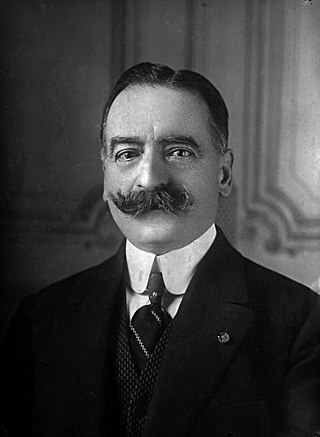
Charles, 1st Count de Broqueville was the prime minister of Belgium, serving during World War I.
The Belgian nobility comprises Belgian individuals or families recognized as noble with or without a title of nobility in the Kingdom of Belgium. The Belgian constitution states that no specific privileges are attached to the nobility.

The Resistance Medal 1940–1945 was a Belgian war medal established by royal decree of the Regent on 16 February 1946 and awarded to all members of the Belgian armed resistance during the Second World War and to members of the intelligence service who operated in occupied territories and participated in combat actions aimed at the liberation of Belgium.

The Terlinden family is a Belgian noble family of German origin, with a noble offspring in Belgium. Its titles are Viscount and Baron.

The House of Lynden is one of the oldest families of the Dutch nobility, originating in the Duchy of Guelders. This family later gave rise to different branches. Most remained in the Netherlands and produced several Dutch politicians, ministers, and military leaders.

The Seven Noble Houses of Brussels were the seven families or clans whose descendants formed the patrician class and urban aristocracy of Brussels, Belgium.
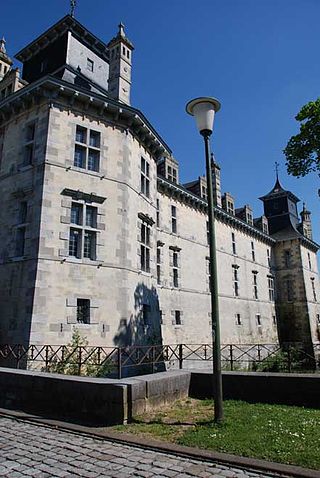
Aspremont-Lynden Castle is a castle in Oud-Rekem in the municipality of Lanaken, province of Limburg, Belgium.

The House of Ursel is the name of an old Belgian noble family of German origin. The Head of the House is styled as Duke of Ursel, while other members are styled as Count/Countess of Ursel.

Ferdinand Charles Gobert, Graf von Aspremont-Lynden-Reckheim (1689–1772), was a soldier, who served in the Low countries for the Habsburgs.

The Carpentier family is a noble family of French origins. One of its branches moved to the kingdoms of England and Scotland in the 15th century. Another branch, the Carpentier de Changy family, has been part of the Belgian nobility since 1892.
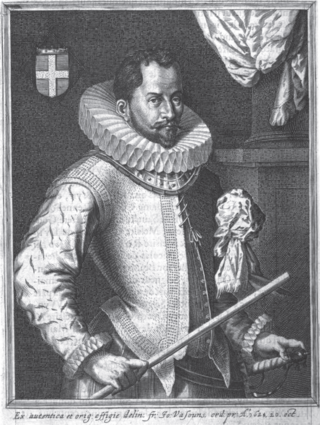
Herman de Lynden, baron of Reckheim and of the Holy Roman Empire, was a military leader serving the Prince-Bishopric of Liège and the Holy Roman Empire. He led troops during the Eighty Years' War and the Cologne War. He also held several high-ranking positions, notably Governor of Cologne and Grand-Mayor of Liège.

The Parthon de Von family stems from the historical province of Berry, France. Its documented ancestry dates back to 1575 and distinguished itself in administration, justice, and diplomacy.

The Snoy family or Snoy d'Oppuers currently Snoy et d'Oppuers, is a Belgian noble family. The current descendants are titled Barons Snoy and of Oppuers.

Guillaume Bernard Ferdinand Charles, Count of Aspremont Lynden (1815–1889) was a member of the Belgian Senate and minister of foreign affairs (1871–1878).
Charles Albert Ferdinand Gobert, comte d'Aspremont Lynden was a Belgian landowner, politician and cabinet minister. He was also a member of the right wing of the Catholic Party. He was the father of Harold Charles d'Aspremont Lynden, another politician and cabinet minister.
Harold René Charles Marie, comte d'Aspremont Lynden was a Belgian cabinet minister, politician of the PSC-CVP and Cavalry Lieutenant-Colonel. He is also notable as Belgium's last Minister of African Affairs (1960-1961), serving as such in Gaston Eyskens' third cabinet. He was one of the Belgian authorities involved in the kidnap and assassination of Congolese Prime Minister Patrice Lumumba.
Paul-Louis-Marie-Célestin, baron de Favereau was a Belgian politician and member of the Catholic Party.
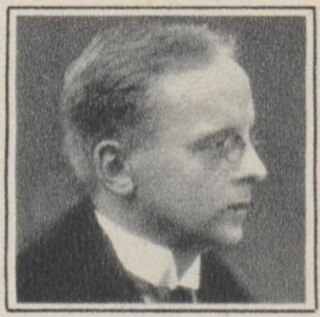
Josse-Émile van Dievoet was a Flemish politician and lawyer. He served as Belgian Minister of Justice.
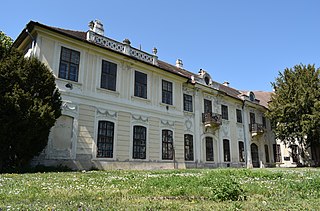
Aspremont Summer Palace is a baroque palace in the Old Town of Bratislava, Slovakia. It was built along with the Medical Garden in 1770 for Count Johann Nepomuk Gobert d’Aspremont-Lynden. Nowadays the palace houses the office of the dean of the Faculty of Medicine of Comenius University.
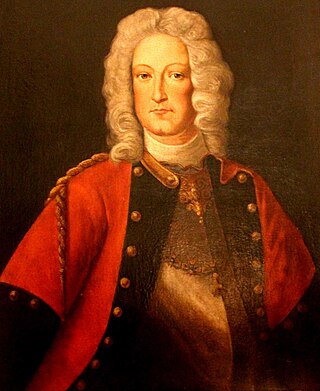
Ferdinand-Gobert Count of Aspremont-Lynden was an Austrian military from the Southern Netherlands who fought in the service of the Habsburg Emperor Leopold I.
This page is based on this
Wikipedia article Text is available under the
CC BY-SA 4.0 license; additional terms may apply.
Images, videos and audio are available under their respective licenses.
















